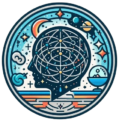Most of us imagine decision-making as a loud, active process — weighing options, making choices, taking bold action. Yet much of our psychological life is shaped not by the decisions we make, but by the ones we don’t. The moments of inaction, the deferred choices, the unmade moves — these “silent decisions” are everywhere. Whether it’s staying in an unfulfilling job, avoiding a difficult conversation, or simply postponing change, choosing not to choose is itself a decision — one that carries profound psychological consequences.
Read More: Emotions SOS
What Is a Silent Decision?
A “silent decision” can be defined as a deliberate or unconscious choice not to act — to remain with the status quo, avoid engagement, or delay a decision indefinitely. In psychology, such phenomena are associated with concepts like omission bias, decision avoidance, and status quo bias.
According to Anderson (2003), decision avoidance encompasses various forms of “doing nothing,” such as deferring, delegating, or ignoring a choice altogether. Inaction may arise not from indifference but from emotional and cognitive processes that steer people toward non-involvement. The key insight is that not acting is not neutral — it is an active choice shaped by psychological factors.
The Mechanisms Behind Inaction
Some mechanisms behind inaction include:
1. Omission Bias
One of the most well-documented findings in decision psychology is omission bias — the tendency to view harmful actions as worse, and more blameworthy, than equally harmful omissions (Spranca, Minsk, & Baron, 1991). People feel more responsible when harm results from something they did rather than something they failed to do.

This bias can lead individuals to avoid making choices altogether. For instance, a manager might refrain from firing an underperforming employee to avoid feeling responsible for that person’s job loss, even if retaining them harms the team. The mind finds moral comfort in omission — a sense that not acting absolves us of responsibility.
2. Anticipated Regret and Emotional Reasoning
Emotions play a central role in decision avoidance. One of the strongest is anticipated regret — the fear of feeling remorse after making the “wrong” choice. Zeelenberg et al. (2000) found that individuals often anticipate greater regret from actions than from inactions, leading them to avoid making decisions that might provoke self-blame later.
This emotional logic creates an illusion of safety in inaction: “If I don’t act, I can’t make a mistake.” Yet over time, the regret of not acting — the “what if” — can grow even more painful than the regret of a wrong decision (Gilovich & Medvec, 1995).
3. The Comfort of the Status Quo
Humans are naturally inclined toward the familiar. The status quo bias describes a preference for maintaining current conditions, even when change might bring improvement. Samuelson and Zeckhauser (1988) demonstrated that people often select default options simply because they represent the existing state.
From an evolutionary standpoint, stability once meant safety. Change implied risk, uncertainty, and potential threat. Psychologically, the same mechanism persists: the current situation feels “known,” while action exposes us to unknown consequences.
4. Decision Fatigue and Cognitive Load
Modern life overwhelms us with choices — from trivial (what to eat) to significant (which career to pursue). Baumeister and colleagues (1998) described ego depletion, where repeated decision-making depletes self-control resources, making people more likely to avoid subsequent choices.
When cognitive or emotional energy is low, the mind defaults to inaction. This explains why people often postpone major decisions after stressful days — not because they lack information, but because they lack mental bandwidth.
5. Social and Moral Buffering
People are also influenced by social norms that make inaction appear morally or socially acceptable. Baron and Ritov (2004) noted that omission bias is amplified when social judgment is involved — others tend to judge harmful actions more harshly than harmful omissions.
Thus, society often rewards “safe” passivity over risky action. For example, a physician may prefer not to try an experimental treatment for fear of being blamed if it fails, even if doing nothing could worsen a patient’s condition.
The Hidden Costs of Silent Decisions
At first glance, inaction feels harmless — a postponement, a pause. But over time, chronic decision avoidance extracts significant psychological and practical costs.
1. Loss of Agency and Self-Efficacy
Repeated inaction can erode one’s sense of agency — the belief that one can influence outcomes through effort. Bandura’s (1997) research on self-efficacy highlights that perceived control is critical for motivation and well-being. When individuals repeatedly avoid decisions, they internalize a sense of helplessness, reinforcing the belief that “things just happen” to them.
This learned passivity resembles what Seligman (1972) termed learned helplessness — a state where people stop trying to change circumstances because prior attempts (or fears of failure) convinced them effort is futile. Silent decisions thus breed quiet resignation.
2. Emotional Accumulation
Avoided decisions don’t vanish; they linger as unfinished cognitive tasks. Zeigarnik (1938) famously showed that incomplete actions remain active in memory, producing tension and intrusive thoughts. Psychologically, every unmade decision adds a small weight — a mental “open tab.” Over time, these accumulate into chronic stress, anxiety, and rumination.
Moreover, decision avoidance often coexists with perfectionism and fear of failure. People who equate worth with flawless performance struggle to tolerate uncertainty, making inaction a form of emotional self-protection (Flett & Hewitt, 2002).
3. Opportunity Costs and Regret Over Time
While omission feels safe in the short term, its long-term consequences can be deeply regrettable. Gilovich and Medvec (1995) found that, over time, people regret inactions more than actions. The missed chances — the job not taken, the love not pursued, the words not spoken — become haunting counterfactuals.
Silent decisions, by avoiding short-term discomfort, trade it for enduring dissatisfaction. Inaction may spare immediate pain but forfeits growth and potential joy.
4. Relationship Consequences
In interpersonal contexts, silence can be especially damaging. Avoiding difficult conversations, for example, may preserve superficial harmony but erodes intimacy and trust. Research on communication avoidance shows that unspoken issues tend to resurface in more destructive forms later (Afifi & Guerrero, 2000).
Choosing not to act in relationships — whether by withholding feedback, affection, or confrontation — communicates indifference. Ironically, the attempt to “do no harm” by staying silent often causes harm through emotional neglect.
When Inaction Is Adaptive
Not all silent decisions are negative. Sometimes, restraint reflects wisdom rather than avoidance.
Mindful inaction — pausing to gather information, letting emotions settle, or waiting for timing to improve — can be highly adaptive. Gigerenzer (2007) notes that intuition often benefits from incubation; stepping back allows unconscious processing to clarify insight.
The distinction lies in intentionality. Conscious, reflective pauses differ from fearful avoidance. In mindful inaction, one says, “I choose to wait.” In avoidance, one says nothing and hopes the problem disappears.
Psychological Strategies to Break Inaction
Recognizing the psychology of silent decisions allows us to reclaim agency. Here are evidence-based strategies to counter maladaptive inaction:
1. Label Inaction as a Decision
The first step is awareness. By naming inaction as a choice (“I’m choosing not to act right now”), we reintroduce agency. This reframing reduces helplessness and clarifies responsibility for outcomes.
2. Clarify Values and Goals
Values-based decision-making, as outlined in Acceptance and Commitment Therapy (Hayes, Strosahl, & Wilson, 1999), emphasizes acting according to core principles rather than fear or comfort. Clarifying what truly matters helps distinguish between wise restraint and paralyzing avoidance.
3. Tolerate Uncertainty and Imperfection
Perfectionism fuels avoidance. Cultivating tolerance for ambiguity — through mindfulness or cognitive restructuring — allows decisions without needing guaranteed outcomes. As the adage goes, “Not making a decision is making one.”
4. Use Time Limits
Setting deadlines for decisions can prevent indefinite postponement. Parkinson’s Law — that work expands to fill available time — applies to choices as well. A time constraint creates momentum.
5. Embrace Small Actions
Behavioral activation, a principle from depression therapy, shows that small steps create psychological momentum (Lewinsohn, 1974). Making a minor decision (sending an email, asking a question) can break inertia and reestablish control.
The Ethical and Existential Dimensions
Beyond cognition and emotion, silent decisions raise moral and existential questions. Sartre’s existentialism asserted that “not to choose is still to choose.” Every act of omission implicitly affirms a value — even if that value is comfort or fear.
From an ethical standpoint, omission can perpetuate harm. For instance, bystanders who witness injustice but remain silent contribute indirectly to wrongdoing. The bystander effect (Darley & Latané, 1968) illustrates how diffusion of responsibility fosters collective inaction — a social manifestation of the silent decision.
Existential psychology suggests that confronting one’s freedom to act — and the anxiety it brings — is essential to authenticity (Yalom, 1980). Avoidance, in contrast, offers temporary relief at the expense of genuine engagement with life.
Making Peace with Choice
Silent decisions are not mere gaps in action; they are the invisible architecture of our psychological landscape. Every time we defer, delay, or avoid, we are shaping who we become — not through what we do, but through what we don’t do.
Understanding the mechanisms behind inaction — omission bias, anticipated regret, status quo preference — allows us to see avoidance not as weakness, but as a protective strategy gone awry. The antidote is awareness: recognizing when silence serves mindfulness and when it serves fear.
In the end, the psychology of silent decisions teaches a simple but profound truth: inaction has consequences. Life moves forward whether we act or not. By choosing consciously — even when that choice is to wait — we reclaim authorship of our lives.
References
Afifi, W. A., & Guerrero, L. K. (2000). Motivations underlying topic avoidance in close relationships. Communication Research, 27(2), 147–185.
Anderson, C. J. (2003). The psychology of doing nothing: Forms of decision avoidance result from reason and emotion. Psychological Bulletin, 129(1), 139–167.
Bandura, A. (1997). Self-efficacy: The exercise of control. New York, NY: W. H. Freeman.
Baumeister, R. F., Bratslavsky, E., Muraven, M., & Tice, D. M. (1998). Ego depletion: Is the active self a limited resource? Journal of Personality and Social Psychology, 74(5), 1252–1265.
Baron, J., & Ritov, I. (2004). Omission bias, individual differences, and normality. Organizational Behavior and Human Decision Processes, 94(2), 74–85.
Darley, J. M., & Latané, B. (1968). Bystander intervention in emergencies: Diffusion of responsibility. Journal of Personality and Social Psychology, 8(4), 377–383.
Flett, G. L., & Hewitt, P. L. (2002). Perfectionism and maladjustment: An overview of theoretical, definitional, and treatment issues. In G. L. Flett & P. L. Hewitt (Eds.), Perfectionism: Theory, research, and treatment (pp. 5–31). Washington, DC: American Psychological Association.
Gigerenzer, G. (2007). Gut feelings: The intelligence of the unconscious. New York, NY: Viking.
Gilovich, T., & Medvec, V. H. (1995). The experience of regret: What, when, and why. Psychological Review, 102(2), 379–395.
Hayes, S. C., Strosahl, K. D., & Wilson, K. G. (1999). Acceptance and commitment therapy: An experiential approach to behavior change. New York, NY: Guilford Press.
Lewinsohn, P. M. (1974). A behavioral approach to depression. In R. J. Friedman & M. M. Katz (Eds.), The psychology of depression: Contemporary theory and research (pp. 157–178). Washington, DC: Winston.
Samuelson, W., & Zeckhauser, R. (1988). Status quo bias in decision making. Journal of Risk and Uncertainty, 1(1), 7–59.
Seligman, M. E. P. (1972). Learned helplessness. Annual Review of Medicine, 23(1), 407–412.
Spranca, M., Minsk, E., & Baron, J. (1991). Omission and commission in judgment and choice. Journal of Experimental Social Psychology, 27(1), 76–105.
Yalom, I. D. (1980). Existential psychotherapy. New York, NY: Basic Books.
Zeelenberg, M., van Dijk, W. W., Manstead, A. S., & van der Pligt, J. (2000). On bad decisions and disconfirmed expectancies: The psychology of regret and disappointment. Cognition & Emotion, 14(4), 521–541.
Zeigarnik, B. (1938). On finished and unfinished tasks. In W. D. Ellis (Ed.), A source book of Gestalt psychology (pp. 300–314). London, England: Routledge & Kegan Paul.
Subscribe to PsychUniverse
Get the latest updates and insights.
Join 3,020 other subscribers!
Niwlikar, B. A. (2025, November 8). The Psychology of Silent Decisions and 5 Important Mechanisms Behind Inaction. PsychUniverse. https://psychuniverse.com/psychology-of-silent-decisions/



